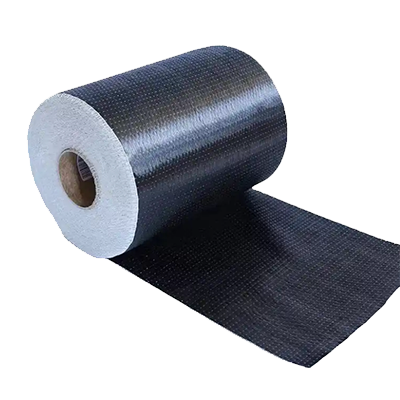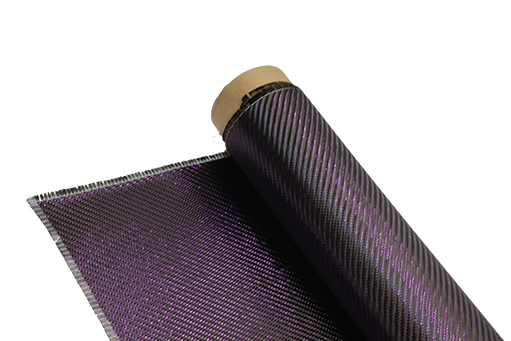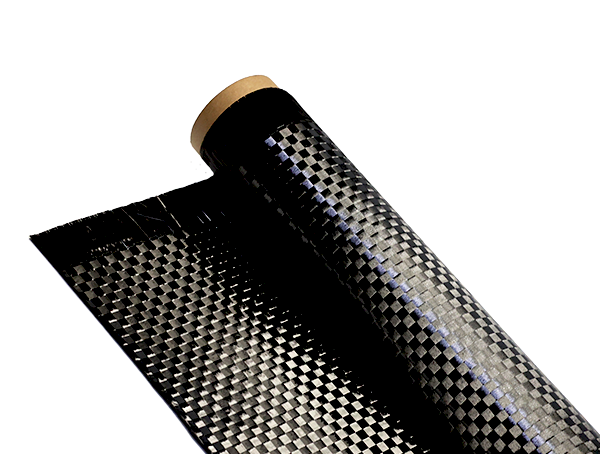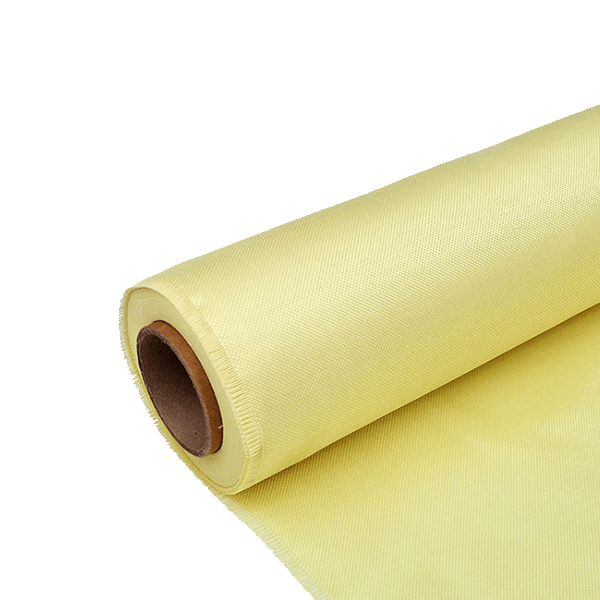What Particle Sizes Do Chopped Carbon Fiber Composites Use?
-
Table of Contents
“Unlocking Strength: Exploring Particle Sizes in Chopped Carbon Fiber Composites.”
Introduction
Chopped carbon fiber composites are increasingly utilized in various industries due to their lightweight, high strength, and enhanced mechanical properties. The particle sizes of chopped carbon fibers play a crucial role in determining the performance and characteristics of the composite material. Typically, these fibers are available in a range of lengths, often measured in millimeters or inches, with common sizes ranging from 1 mm to 25 mm. The choice of particle size affects the composite’s processing, mechanical strength, and overall performance, making it essential for manufacturers to select the appropriate fiber length based on the intended application and desired properties of the final product.
Particle Size Distribution in Chopped Carbon Fiber Composites
Chopped carbon fiber composites have gained significant attention in various industries due to their exceptional mechanical properties, lightweight nature, and versatility. One of the critical factors influencing the performance of these composites is the particle size distribution of the carbon fibers used in their formulation. Understanding the particle size distribution is essential, as it directly affects the composite’s mechanical strength, durability, and overall performance.
In the context of chopped carbon fiber composites, particle size refers to the length and diameter of the individual carbon fibers that have been cut into shorter lengths for incorporation into a matrix material. Typically, these fibers are available in various lengths, ranging from a few millimeters to several centimeters, and their diameters can vary from a few micrometers to several hundred micrometers. The choice of particle size is crucial, as it influences the interfacial bonding between the fibers and the matrix, which ultimately determines the composite’s mechanical properties.
When considering the particle size distribution, it is important to note that a narrower distribution often leads to improved mechanical performance. This is because a uniform fiber length can enhance the load transfer efficiency between the fibers and the matrix, resulting in better tensile strength and stiffness. Conversely, a broader distribution may lead to uneven stress distribution within the composite, potentially compromising its structural integrity. Therefore, manufacturers often aim for a specific range of fiber lengths and diameters to optimize the performance of their chopped carbon fiber composites.
Moreover, the processing methods used to produce these composites can also influence the particle size distribution. For instance, during the chopping process, the fibers may experience mechanical stresses that can lead to variations in length and diameter. Consequently, it is essential for manufacturers to control the chopping process carefully to achieve the desired particle size distribution. Techniques such as air classification or sieving can be employed to separate fibers based on their size, ensuring a more consistent product.
In addition to mechanical properties, the particle size distribution can also impact the composite’s processing characteristics. For example, a finer particle size may enhance the flowability of the composite during molding or extrusion processes, allowing for better filling of complex geometries. On the other hand, larger fibers may provide improved reinforcement but could hinder the processing due to their reduced flowability. Therefore, a balance must be struck between achieving optimal mechanical performance and ensuring suitable processing characteristics.
Furthermore, the application of chopped carbon fiber composites can dictate the preferred particle size distribution. In automotive applications, for instance, where weight reduction is critical, shorter fibers may be favored to achieve a lightweight composite without compromising strength. In contrast, aerospace applications may require longer fibers to maximize strength-to-weight ratios. Thus, understanding the specific requirements of each application is vital for selecting the appropriate particle size distribution.
In conclusion, the particle size distribution in chopped carbon fiber composites plays a pivotal role in determining their mechanical properties and processing characteristics. By carefully selecting and controlling the fiber lengths and diameters, manufacturers can optimize the performance of these composites for various applications. As research and technology continue to advance, the ability to tailor particle size distributions will likely lead to even more innovative and high-performance carbon fiber composite materials.
Impact of Particle Size on Mechanical Properties of Carbon Fiber Composites

The mechanical properties of carbon fiber composites are significantly influenced by the particle sizes used in their formulation. Understanding the impact of particle size is crucial for optimizing the performance of these materials in various applications, ranging from aerospace to automotive industries. As the demand for lightweight and high-strength materials continues to grow, the role of particle size in enhancing the mechanical properties of carbon fiber composites becomes increasingly important.
To begin with, the size of the carbon fibers themselves plays a pivotal role in determining the overall strength and stiffness of the composite. Smaller fiber diameters typically lead to improved interfacial bonding between the fibers and the matrix material. This enhanced bonding is essential for transferring loads effectively, which ultimately contributes to the composite’s tensile strength. Conversely, larger fibers may create weak points within the matrix, leading to reduced mechanical performance. Therefore, selecting the appropriate fiber diameter is critical for achieving optimal mechanical properties.
In addition to fiber size, the distribution of particle sizes within the composite matrix also has a profound impact on its mechanical behavior. A well-graded particle size distribution can enhance the packing density of the composite, resulting in improved mechanical interlocking and load transfer between the fibers and the matrix. This phenomenon is particularly important in applications where high impact resistance is required. For instance, composites with a finer particle size can absorb energy more effectively during impact events, thereby reducing the likelihood of catastrophic failure.
Moreover, the aspect ratio of the carbon fibers, which is defined as the ratio of fiber length to diameter, also influences the mechanical properties of the composite. Higher aspect ratios generally lead to improved tensile strength and stiffness, as longer fibers can better distribute loads across the matrix. However, if the fibers are too long relative to their diameter, they may become entangled, which can hinder the flow of the matrix during processing and lead to defects in the final product. Therefore, achieving an optimal balance between fiber length and diameter is essential for maximizing the mechanical performance of carbon fiber composites.
Furthermore, the interaction between particle size and the matrix material cannot be overlooked. Different matrix materials exhibit varying degrees of compatibility with carbon fibers, which can affect the overall mechanical properties of the composite. For instance, thermosetting resins may provide better adhesion to carbon fibers than thermoplastics, leading to enhanced mechanical performance. Additionally, the viscosity of the matrix material can influence how well the particles disperse during processing. A lower viscosity matrix may allow for better wetting of the fibers, resulting in improved load transfer and mechanical properties.
In conclusion, the impact of particle size on the mechanical properties of carbon fiber composites is multifaceted and requires careful consideration during the design and manufacturing processes. By optimizing fiber diameter, particle size distribution, and matrix compatibility, manufacturers can significantly enhance the performance of carbon fiber composites. As research continues to advance in this field, a deeper understanding of these relationships will pave the way for the development of even more efficient and high-performing materials, ultimately meeting the evolving demands of various industries. Thus, the careful selection and manipulation of particle sizes are essential for harnessing the full potential of carbon fiber composites in modern applications.
Techniques for Measuring Particle Sizes in Chopped Carbon Fiber Materials
The measurement of particle sizes in chopped carbon fiber composites is a critical aspect of material characterization, influencing both the performance and application of these advanced materials. Various techniques have been developed to accurately assess particle sizes, each with its own advantages and limitations. Understanding these methods is essential for researchers and manufacturers aiming to optimize the properties of carbon fiber composites.
One of the most commonly employed techniques for measuring particle sizes is laser diffraction. This method operates on the principle that particles scatter light at angles that are dependent on their size. When a laser beam passes through a sample, the resulting diffraction pattern can be analyzed to determine the size distribution of the particles. Laser diffraction is particularly advantageous due to its rapid analysis time and ability to measure a wide range of particle sizes, from nanometers to millimeters. However, it is important to note that the accuracy of this technique can be influenced by the refractive index of the particles and the dispersion medium used.
Another widely used method is dynamic light scattering (DLS), which is particularly effective for measuring smaller particles, typically in the nanometer to micrometer range. DLS measures the Brownian motion of particles suspended in a liquid, and by analyzing the fluctuations in scattered light intensity, it can provide information about the size distribution. While DLS is highly sensitive and can yield precise measurements, it is less effective for larger particles, which may not exhibit significant Brownian motion.
In addition to these optical methods, sieve analysis remains a traditional yet reliable technique for measuring particle sizes, especially for larger chopped carbon fiber materials. This method involves passing the material through a series of sieves with progressively smaller mesh sizes. By weighing the amount of material retained on each sieve, one can determine the particle size distribution. Although sieve analysis is straightforward and does not require sophisticated equipment, it is limited to larger particles and may not provide a complete picture of the size distribution for finer materials.
Furthermore, scanning electron microscopy (SEM) offers a more direct visualization of particle sizes and shapes. This technique involves bombarding a sample with electrons and capturing the resulting images, which can reveal detailed morphological information. SEM is particularly useful for examining the surface characteristics of chopped carbon fibers, allowing researchers to assess not only size but also the quality and integrity of the fibers. However, the process is time-consuming and requires sample preparation, which can introduce artifacts that may affect the measurements.
Another innovative approach is the use of image analysis techniques, which involve capturing images of the chopped carbon fibers and analyzing them using software to determine particle sizes. This method can provide high-resolution data and is particularly useful for assessing the distribution of fiber lengths and diameters. However, it requires careful calibration and validation to ensure accuracy.
In conclusion, the measurement of particle sizes in chopped carbon fiber composites is a multifaceted process that can be approached through various techniques, each offering unique insights into the material’s characteristics. From laser diffraction and dynamic light scattering to sieve analysis, scanning electron microscopy, and image analysis, the choice of method depends on the specific requirements of the study and the nature of the material being analyzed. By employing these techniques effectively, researchers and manufacturers can enhance the performance and application of carbon fiber composites, ultimately contributing to advancements in various industries.
Q&A
1. **Question:** What is the typical particle size range for chopped carbon fiber composites?
**Answer:** The typical particle size range for chopped carbon fiber composites is usually between 1 mm to 10 mm in length.
2. **Question:** How does the particle size of chopped carbon fibers affect the composite properties?
**Answer:** Smaller particle sizes generally improve the mechanical properties and dispersion within the matrix, while larger sizes can enhance stiffness and strength but may lead to poor distribution.
3. **Question:** Are there specific applications that require certain particle sizes of chopped carbon fibers?
**Answer:** Yes, applications such as automotive and aerospace components often require specific particle sizes to optimize strength, weight, and processing characteristics based on performance requirements.











